
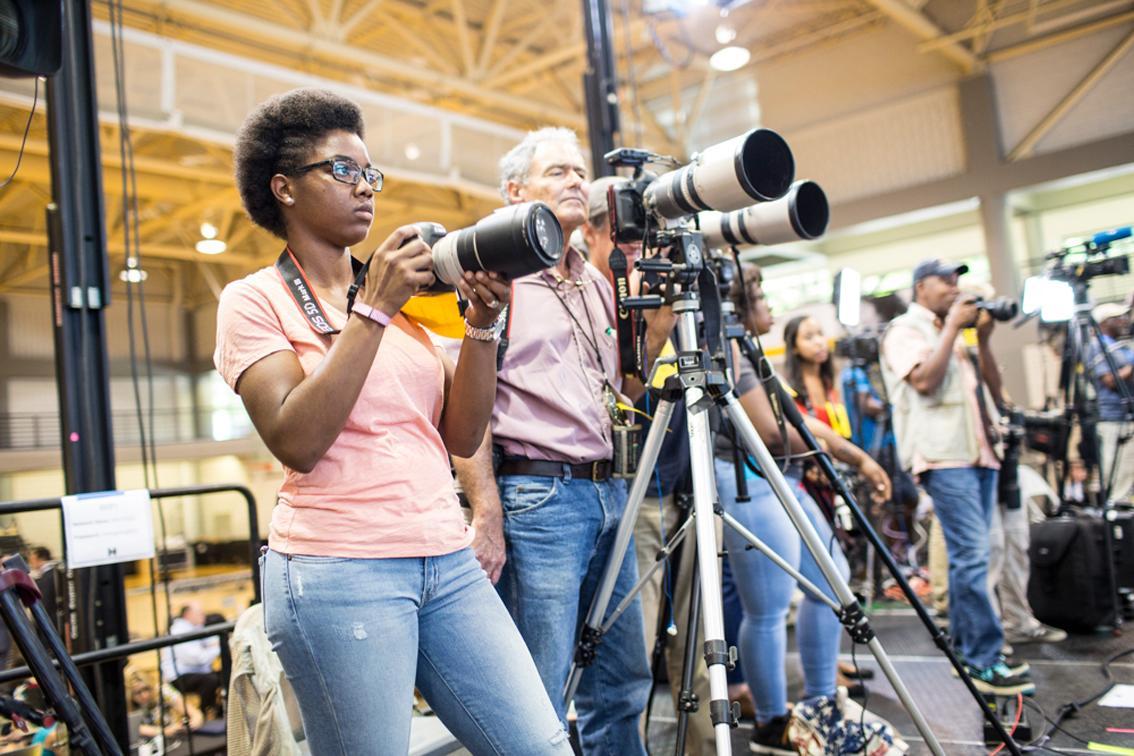
As the first Presidential Debate gets underway tonight at Hofstra University in New York, 11 Longwood students in a remarkable new photography course focused on the presidential campaign will be there, cameras in hand.
Eight days later, when the world’s attention shifts to Longwood for the Vice Presidential Debate, our students will be there, too. They’ve already photographed rallies for both presidential campaigns and traveled to Washington, D.C.
Art 495: On The Campaign Trail is perhaps the most distinctive and remarkable of more than 30 courses on campus this fall that have been created or redesigned to incorporate debate themes. The courses range from game theory in economics to a course on political music and even a physics class. All are focusing students on the democratic process at work, and many will serve as de facto pilots for a bold new general education curriculum focused on citizenship that will roll out at Longwood over the next few years. At no other debate host institution have faculty members gone so far to incorporate the debate into the student academic experience.
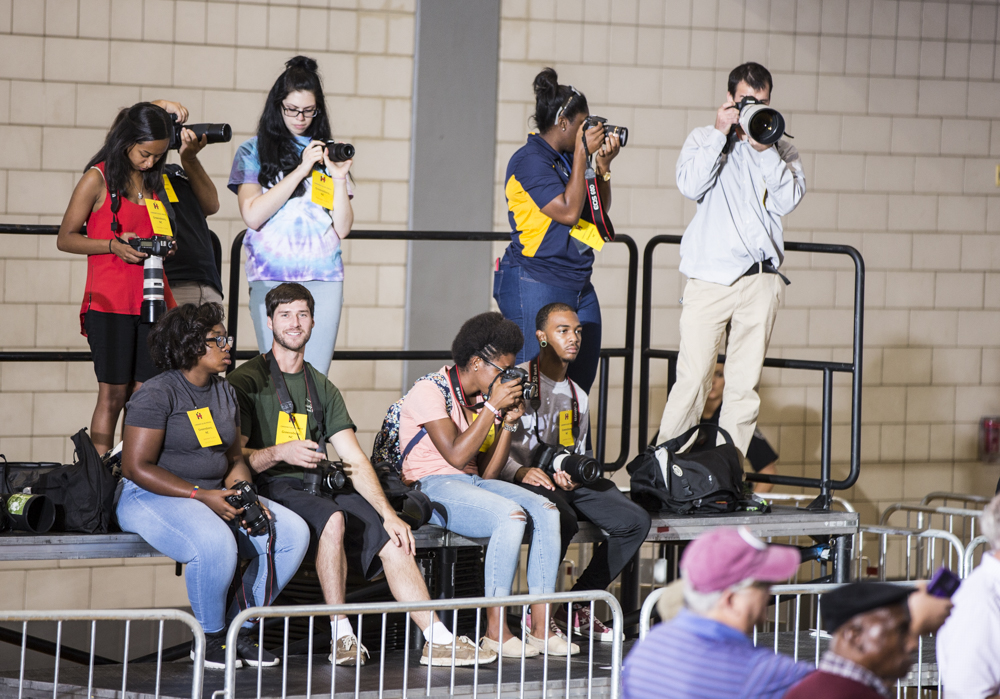
Professor Michael Mergen, himself a professional with deep experience covering presidential campaigns for national news organizations, says the work of his students is stacking up against the best he’s seen from his professional colleagues.
He describes below the first two months of work in one of the most exciting and edifying classrooms of all: the press gallery.
We arrived at the Sandler Center—10 students lugging cameras and equipment bags followed by one professor—with crowds of Donald Trump supporters filing into the building through TSA and Secret Service checks. The students spread throughout the hall an hour before the candidate arrived, an electric buzz in the air, and slowly moved up and down to frame compositions alongside photographers from some of the most respected media organizations in the world—Associated Press, Reuters, Wall Street Journal. The energy grew with each speaker and I could see looks of disbelief overtaking the faces of the Longwood students as they realized they were about to not only witness history but also document it.
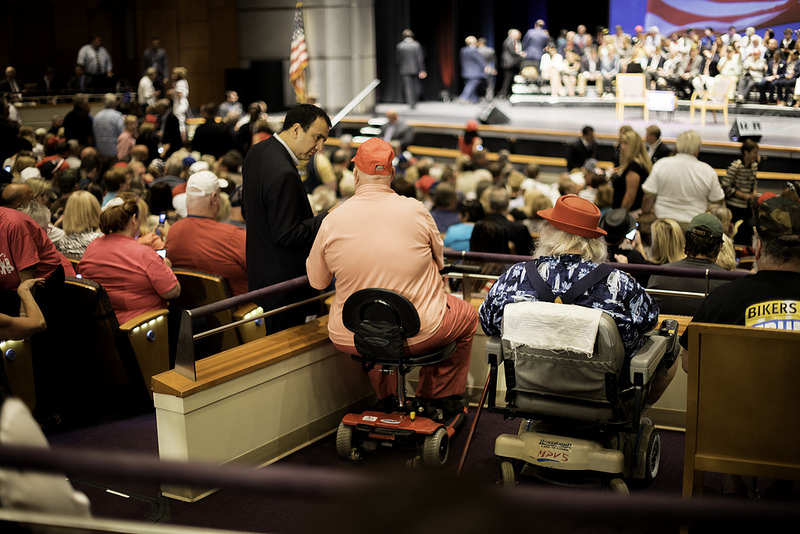
When Trump walked out on stage, the cheers drowned out the sound of camera shutters documenting each gesture, facial expression and cries of support.
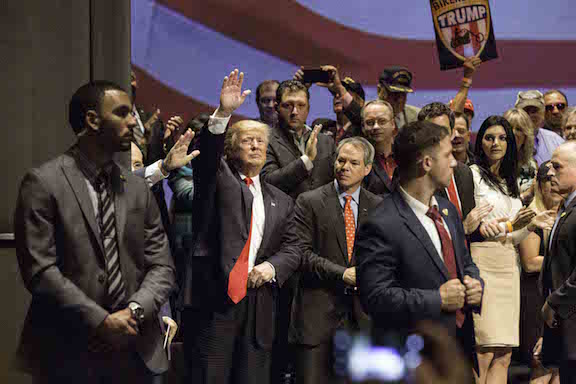
The week after the rally, I was helping a student edit her photographs. She was a little down about it—she didn’t feel they were up to par. I pulled up a professional feed of the same event, and frame for frame, her work matched up. She could have easily been there for the AP.
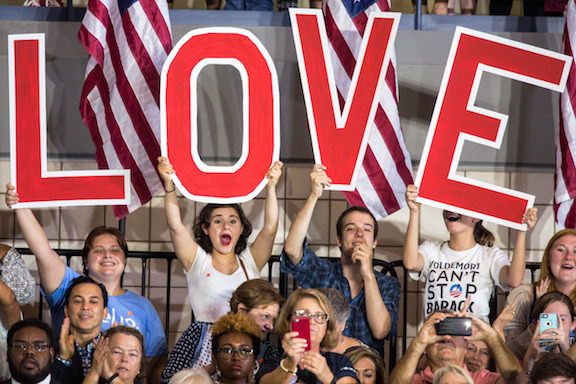
The students of Art 495: On The Campaign Trail are part of a unique class created in the spirit of the Longwood debate. They’re working as photojournalists—documenting the candidates, supporters, media, and infinite small moments that make up an election cycle—and beginning to define their own style and approach to political photography. Much more importantly than endless photos of candidates at podiums, Longwood students are focusing on what it looks and feels like when citizens participate in politics.
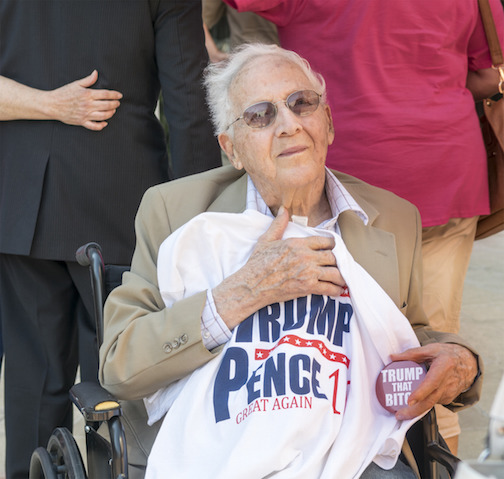
“We all had our ideas and expectations of what a Trump event would look like. But seeing events like this unfiltered, and especially documenting everything that happens at them, challenges those assumptions.”
Lauren Aktung ’18
The next week took us to Greensboro, North Carolina, for a Hillary Clinton rally. This time, though, we weren’t members of the crowd, but fully credentialed members of the media. As close as the students thought they had gotten to a full professional experience, this blew it out of the water. Six students sat on the media riser bedside CNN and Fox News cameras—an opportunity not many photographers ever get.
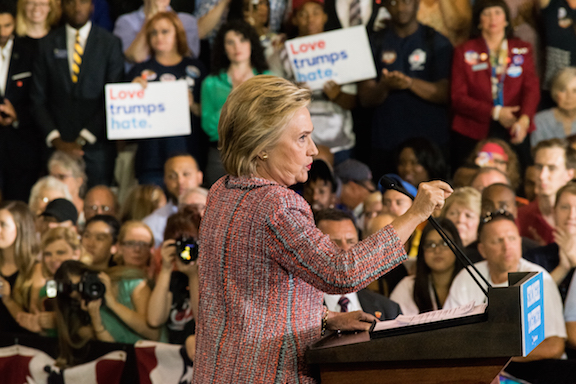
“Having media credentials felt kind of surreal. It was like we were actually part of the press for a big company. I never expected this kind of opportunity from a college class.”
Brandyn Johnson ’18
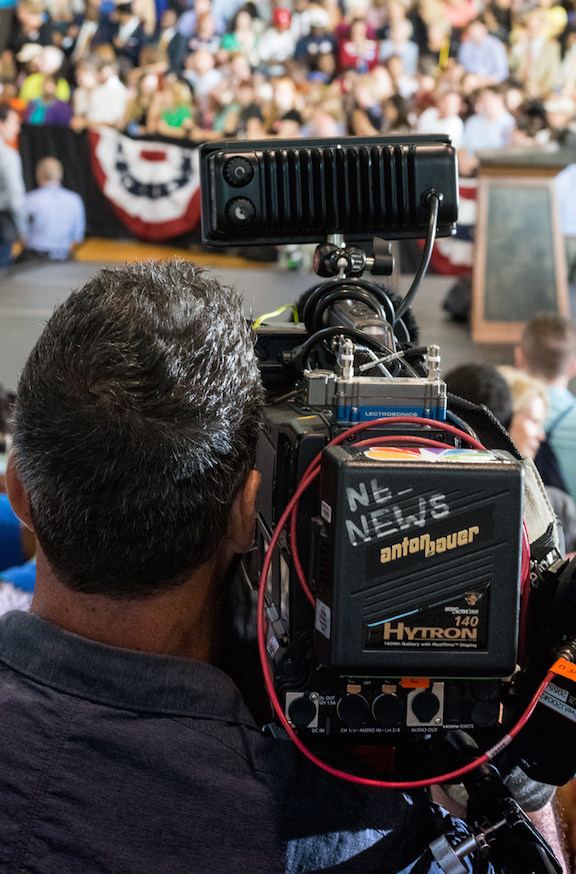
“You see things like this on the news, hear about it on the radio, but never really imagine yourself being there.”
Tia Dillahunt ’18
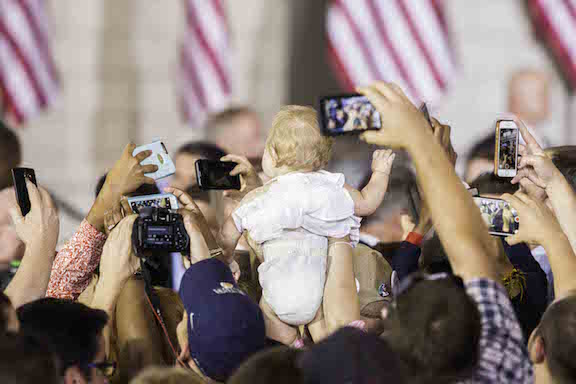
“I am documenting history—it really hits you that this person might become president. A year ago I could hardly roll up my film or take a decent picture. Now I could really do photography as a job.”
Mark Kuhnke ’17
My students are witnessing and documenting the political process. Not in theory, in lectures or reading assignments, but on the ground, firsthand. We talk about creating citizen leaders here at Longwood, and I can’t imagine a more fitting classroom than campaign rallies and debate stages.
About the Author
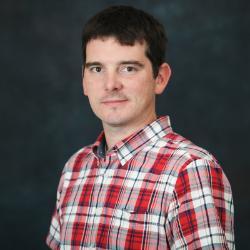
Michael Mergen
Assistant Professor of Photography